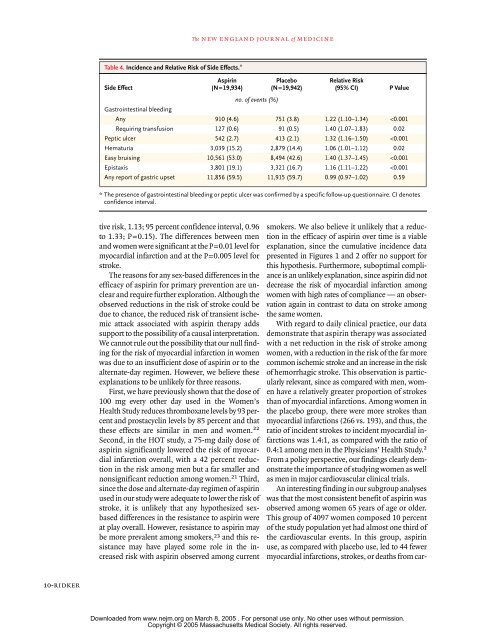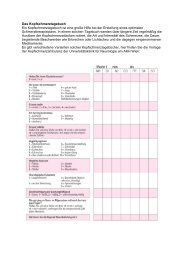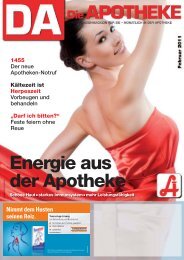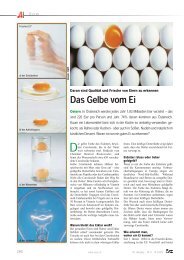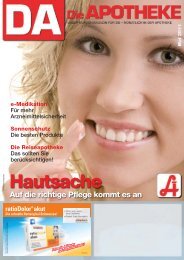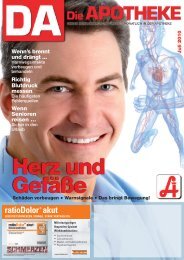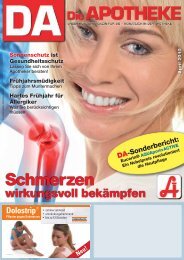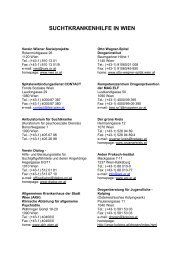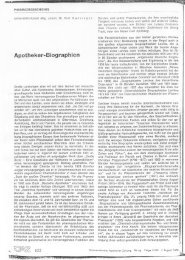The new england journal of medicine
The new england journal of medicine
The new england journal of medicine
You also want an ePaper? Increase the reach of your titles
YUMPU automatically turns print PDFs into web optimized ePapers that Google loves.
10-ridker<br />
Table 4. Incidence and Relative Risk <strong>of</strong> Side Effects. *<br />
Side Effect<br />
tive risk, 1.13; 95 percent confidence interval, 0.96<br />
to 1.33; P=0.15). <strong>The</strong> differences between men<br />
and women were significant at the P=0.01 level for<br />
myocardial infarction and at the P=0.005 level for<br />
stroke.<br />
<strong>The</strong> reasons for any sex-based differences in the<br />
efficacy <strong>of</strong> aspirin for primary prevention are unclear<br />
and require further exploration. Although the<br />
observed reductions in the risk <strong>of</strong> stroke could be<br />
due to chance, the reduced risk <strong>of</strong> transient ischemic<br />
attack associated with aspirin therapy adds<br />
support to the possibility <strong>of</strong> a causal interpretation.<br />
We cannot rule out the possibility that our null finding<br />
for the risk <strong>of</strong> myocardial infarction in women<br />
was due to an insufficient dose <strong>of</strong> aspirin or to the<br />
alternate-day regimen. However, we believe these<br />
explanations to be unlikely for three reasons.<br />
First, we have previously shown that the dose <strong>of</strong><br />
100 mg every other day used in the Women’s<br />
Health Study reduces thromboxane levels by 93 percent<br />
and prostacyclin levels by 85 percent and that<br />
these effects are similar in men and women.<br />
Second, in the HOT study, a 75-mg daily dose <strong>of</strong><br />
aspirin significantly lowered the risk <strong>of</strong> myocardial<br />
infarction overall, with a 42 percent reduction<br />
in the risk among men but a far smaller and<br />
nonsignificant reduction among women.<br />
<strong>The</strong> <strong>new</strong> <strong>england</strong> <strong>journal</strong> <strong>of</strong> <strong>medicine</strong><br />
* <strong>The</strong> presence <strong>of</strong> gastrointestinal bleeding or peptic ulcer was confirmed by a specific follow-up questionnaire. CI denotes<br />
confidence interval.<br />
21<br />
n engl j med 352;13<br />
22<br />
Third,<br />
since the dose and alternate-day regimen <strong>of</strong> aspirin<br />
used in our study were adequate to lower the risk <strong>of</strong><br />
stroke, it is unlikely that any hypothesized sexbased<br />
differences in the resistance to aspirin were<br />
at play overall. However, resistance to aspirin may<br />
be more prevalent among smokers,<br />
Aspirin<br />
(N=19,934)<br />
23<br />
and this re-<br />
sistance may have played some role in the increased<br />
risk with aspirin observed among current<br />
Placebo<br />
(N=19,942)<br />
smokers. We also believe it unlikely that a reduction<br />
in the efficacy <strong>of</strong> aspirin over time is a viable<br />
explanation, since the cumulative incidence data<br />
presented in Figures 1 and 2 <strong>of</strong>fer no support for<br />
this hypothesis. Furthermore, suboptimal compliance<br />
is an unlikely explanation, since aspirin did not<br />
decrease the risk <strong>of</strong> myocardial infarction among<br />
women with high rates <strong>of</strong> compliance — an observation<br />
again in contrast to data on stroke among<br />
the same women.<br />
With regard to daily clinical practice, our data<br />
demonstrate that aspirin therapy was associated<br />
with a net reduction in the risk <strong>of</strong> stroke among<br />
women, with a reduction in the risk <strong>of</strong> the far more<br />
common ischemic stroke and an increase in the risk<br />
<strong>of</strong> hemorrhagic stroke. This observation is particularly<br />
relevant, since as compared with men, women<br />
have a relatively greater proportion <strong>of</strong> strokes<br />
than <strong>of</strong> myocardial infarctions. Among women in<br />
the placebo group, there were more strokes than<br />
myocardial infarctions (266 vs. 193), and thus, the<br />
ratio <strong>of</strong> incident strokes to incident myocardial infarctions<br />
was 1.4:1, as compared with the ratio <strong>of</strong><br />
0.4:1 among men in the Physicians’ Health Study.<br />
From a policy perspective, our findings clearly demonstrate<br />
the importance <strong>of</strong> studying women as well<br />
as men in major cardiovascular clinical trials.<br />
An interesting finding in our subgroup analyses<br />
was that the most consistent benefit <strong>of</strong> aspirin was<br />
observed among women 65 years <strong>of</strong> age or older.<br />
This group <strong>of</strong> 4097 women composed 10 percent<br />
<strong>of</strong> the study population yet had almost one third <strong>of</strong><br />
the cardiovascular events. In this group, aspirin<br />
use, as compared with placebo use, led to 44 fewer<br />
myocardial infarctions, strokes, or deaths from car-<br />
www.nejm.org march 31,<br />
2005<br />
Relative Risk<br />
(95% CI) P Value<br />
no. <strong>of</strong> events (%)<br />
Gastrointestinal bleeding<br />
Any 910 (4.6) 751 (3.8) 1.22 (1.10–1.34)


